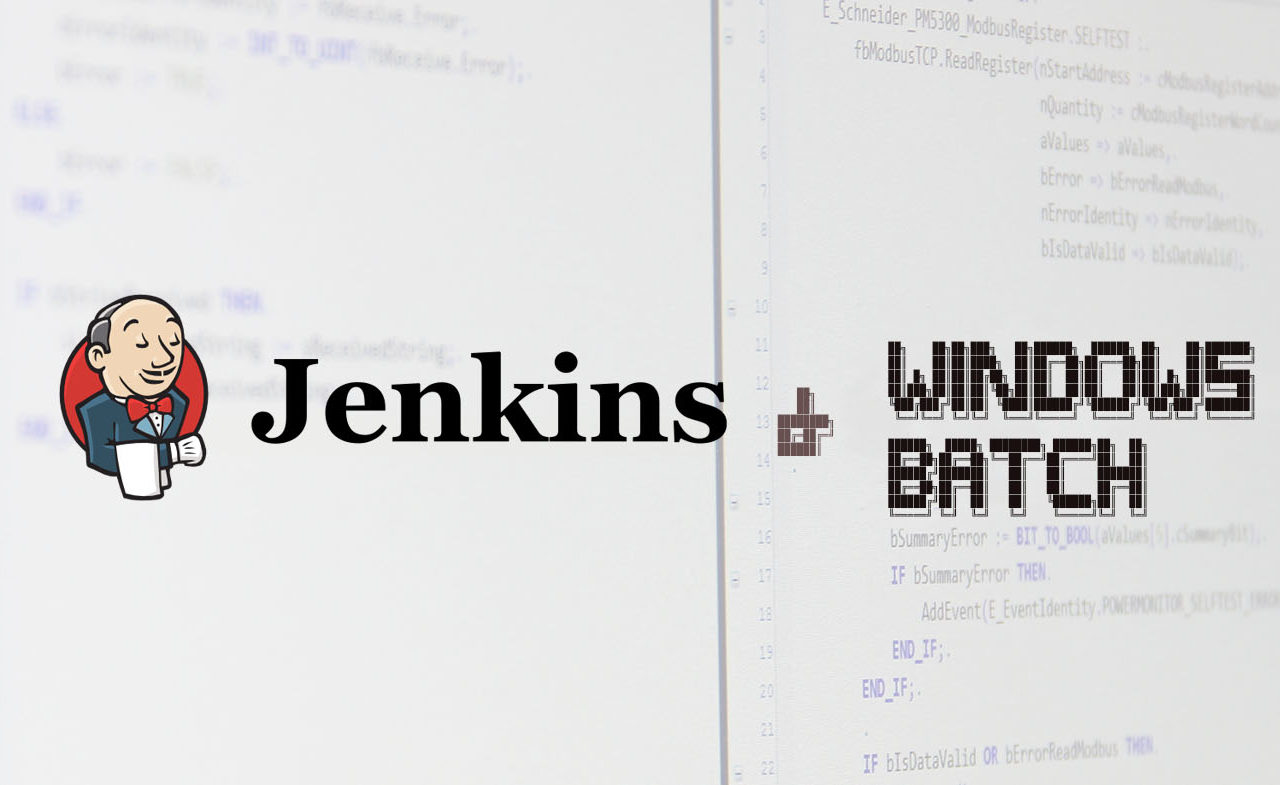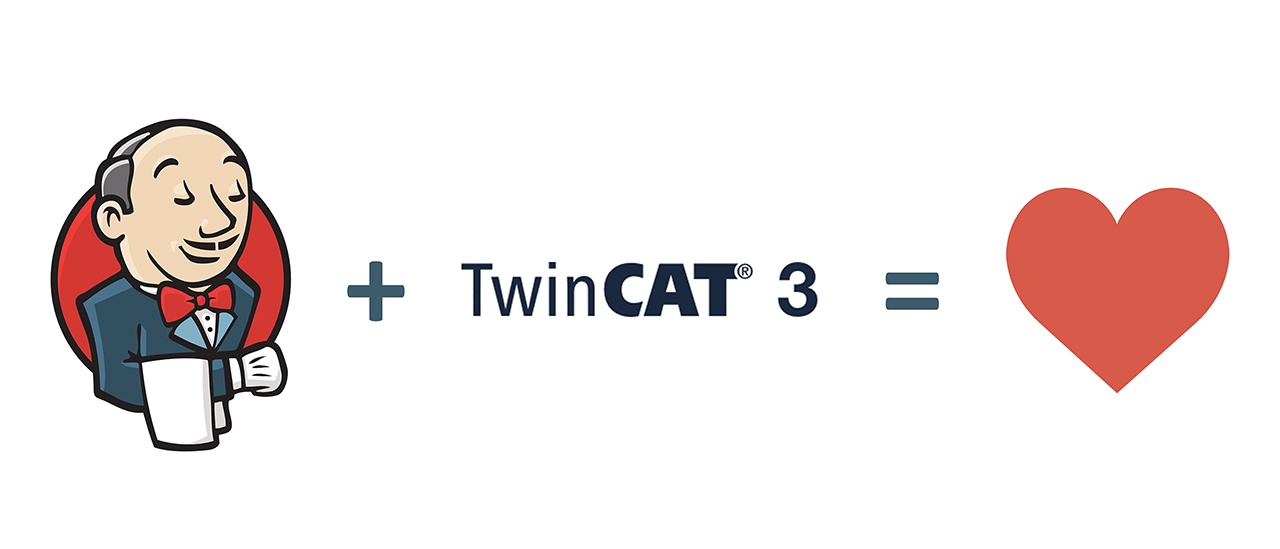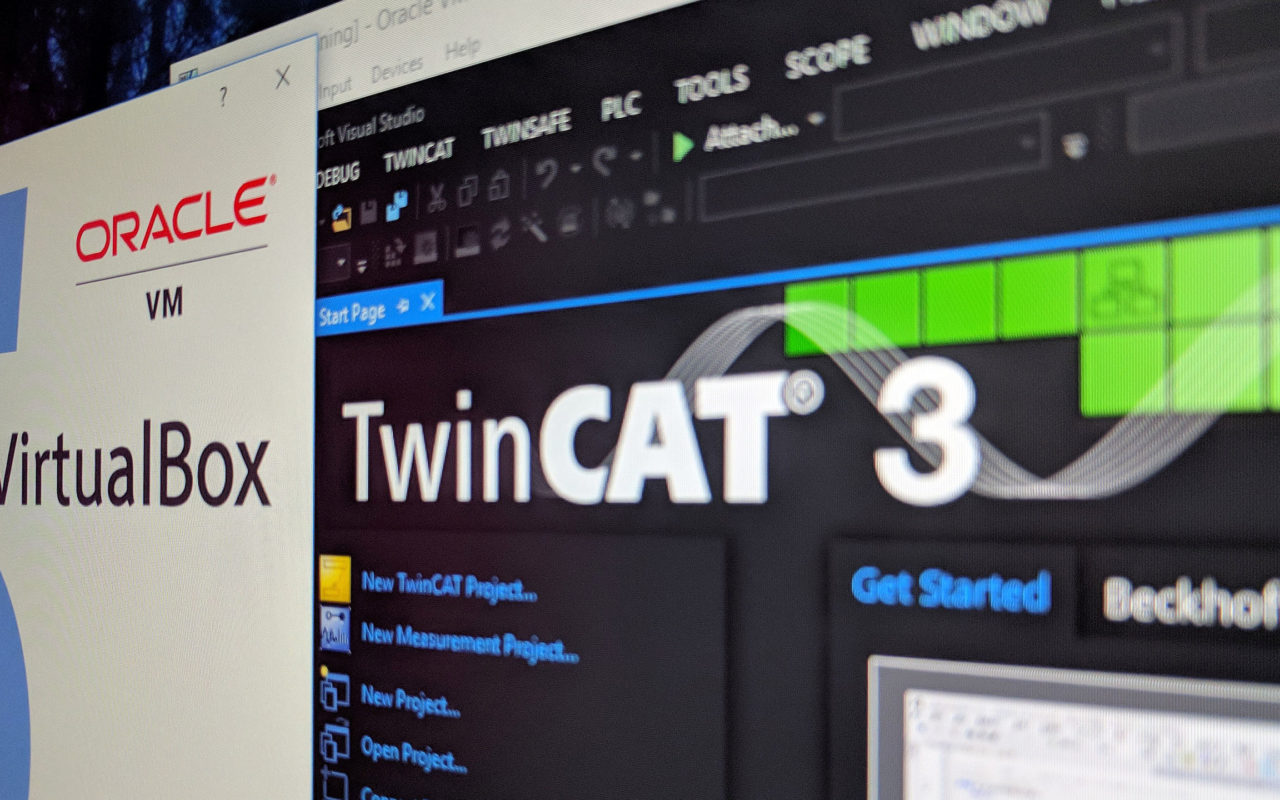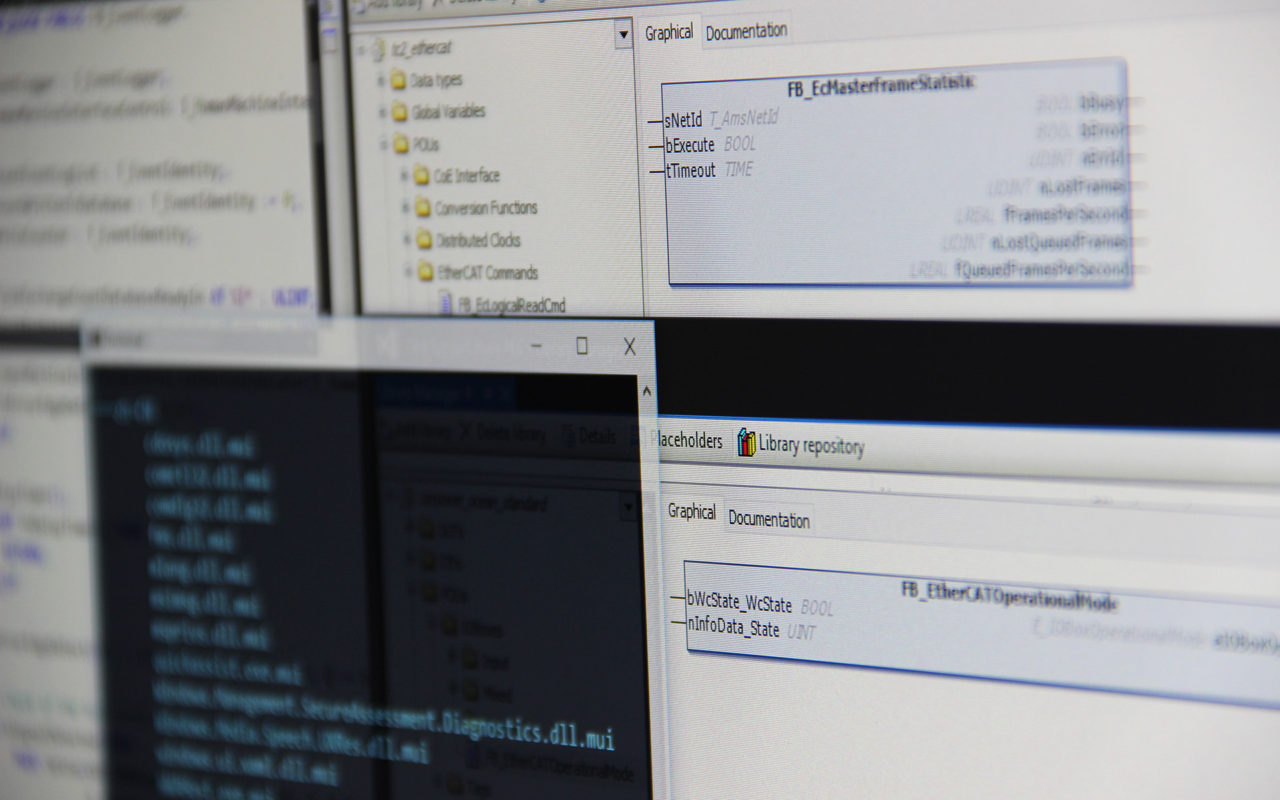In the previous post we did some installation and configuration of software to support us in the automation of doing static code analysis of TwinCAT software. We have reached a state where a Jenkins job is launched as soon as our TwinCAT library project is pushed to the GIT-repository. Even though we have a Jenkins job defined for static code analysis of TwinCAT software, it’s not doing anything yet. This will be our next step.
Library categories
 I like to have things structured and ordered. This does not only include the obvious stuff as making sure to pair and match all socks after laundry, but it also includes the TwinCAT software I develop, more specifically own developed TwinCAT libraries. “Whaaat??? What does sorting socks have to do with TwinCAT software?” you might wonder. I’m glad you asked.
I like to have things structured and ordered. This does not only include the obvious stuff as making sure to pair and match all socks after laundry, but it also includes the TwinCAT software I develop, more specifically own developed TwinCAT libraries. “Whaaat??? What does sorting socks have to do with TwinCAT software?” you might wonder. I’m glad you asked.
CI/CD with TwinCAT – part two
In the previous post we were introduced to the concept of continous integration and
continous delivery (CI/CD) in the world of PLC software development, more specifically TwinCAT development. The conclusion is that certain processes in the process of creating software can and should be automated. As an example, we set the goal of automating static code analysis of all TwinCAT software. In this part of the series of CI/CD we will look into some practical matters of installing and configuring the necessary software.
CI/CD with TwinCAT – part one
The development of PLC software needs to enter the 21st century. With the increased complexity of developed systems, the amount of software that is going to be developed for a given system will continue to increase. PLC development is partially living on an isolated island, and while most other areas of software development have been modernized, the world of PLC software engineering development is going significantly slower. When we develop more software, there is a need for more automation to remove unecessary manual handling and in the end increase the quality of the software we develop. Now I know that you can’t compare developing software for a web shop with developing software for a PLC that can run software that is critical and maybe even be safety-critical and one line of code can be the difference of life and death. However, developing reliable and robust software and adhering to modern software development processes and tools does not mean they do rule each other out. You can pick both.
TwinCAT & virtualization
Most people who have developed software have at some point or another used virtualization technology. Software development for PLCs in a virtual environment is often overlooked, since PLC development is so close to the hardware. Nevertheless, there are still advantages. Working for several projects with various requirements, but where a Beckhoff PLC/TwinCAT was the common delimiter, made me ask myself “How much use of virtualization can I do for TwinCAT software development?”
Mocking objects in TwinCAT
 In my earlier posts I’ve written about development of TwinCAT software using test driven development (TDD), by writing unit tests. One of the advantages by adhering to the process of TDD is that you mostly will end up with function blocks (FBs) which have limited but well defined responsibility. Eventually you will however have FBs that are dependent on other function blocks. These could be FBs that are your own, or part of some 3rd party library, for example a Beckhoff library. Further, what if this external FB relies on some other functionality such as external communication using sockets that we have no control of? The external FBs should already be tested, we’re only interested in making sure our unit tests test our code! What do we do? A solution to this is to mock the external functionality and use dependency injection.
In my earlier posts I’ve written about development of TwinCAT software using test driven development (TDD), by writing unit tests. One of the advantages by adhering to the process of TDD is that you mostly will end up with function blocks (FBs) which have limited but well defined responsibility. Eventually you will however have FBs that are dependent on other function blocks. These could be FBs that are your own, or part of some 3rd party library, for example a Beckhoff library. Further, what if this external FB relies on some other functionality such as external communication using sockets that we have no control of? The external FBs should already be tested, we’re only interested in making sure our unit tests test our code! What do we do? A solution to this is to mock the external functionality and use dependency injection.
The wonders of ANY
While doing software development in TwinCAT, I have always been missing some sort of generic data type/container, to have some level of conformance to generic programming. “Generic programming… what’s that?”, you may ask. I like Ralf Hinze’s description of generic programming:
A generic program is one that the programmer writes once, but which works over many different data types.
I’ve been using generics in Ada and templates in C++, and many other languages have similar concepts. Why was there no such thing available in the world of TwinCAT/IEC 61131-3? For a long time there was a link to a type “ANY” in their data types section of TwinCAT3, but the only information available on the website was that the “ANY” type was not yet available. By coincidence I revisited their web page to check it out, and now a description is available! I think the documentation has done a good job describing the possibilities with the ANY-type, but I wanted to elaborate with this a little further.
Managing TwinCAT libraries
 When being in an early phase of a project, it’s common to use “latest and greatest” of the dependencies that your software relies on. In the beginning of a project, it’s usually low risk to built your system on the latest of everything as you’ve got plenty of time to make sure everything works as expected. I guess that’s one of the many joys of starting a new project, you are more free and can experiment more. But as you get closer and closer to the delivery of the project, it’s usually a good idea to start and “freeze” parts of the software. This includes everything from own developed libraries, TwinCAT supplied libraries, drivers, TwinCAT runtime and even the operating system on the target device (which anyways doesn’t change too often). Twenty years from now, I want to be able to compile and build the exact same executable binary that is running on that nice expensive machine right now. When I was close to delivery of a TwinCAT project, I got some problems related to this topic.
When being in an early phase of a project, it’s common to use “latest and greatest” of the dependencies that your software relies on. In the beginning of a project, it’s usually low risk to built your system on the latest of everything as you’ve got plenty of time to make sure everything works as expected. I guess that’s one of the many joys of starting a new project, you are more free and can experiment more. But as you get closer and closer to the delivery of the project, it’s usually a good idea to start and “freeze” parts of the software. This includes everything from own developed libraries, TwinCAT supplied libraries, drivers, TwinCAT runtime and even the operating system on the target device (which anyways doesn’t change too often). Twenty years from now, I want to be able to compile and build the exact same executable binary that is running on that nice expensive machine right now. When I was close to delivery of a TwinCAT project, I got some problems related to this topic.
Watchdog timer
 Software engineers make mistakes. No matter how well experienced you are, or how many unit tests you’ve written for your code, or how well reviewed the code is, we’re humans and at some point or another we’ll make mistakes. It can be a null pointer reference, an out-of-bound indexing of an array, segmentation fault, a zero-division or any other selection of the thousands of software bugs that should not happen but will happen. In my current area, development of wave energy converters (WEC), I don’t have the luxury of being able to easily reboot the PLC/controller if a software crash happens. I can’t just walk up to the system, and do a power-reset. The WEC can be far out in the ocean. Going out on the ocean and doing any form of maintenance involves costs, which we want to avoid. With this type of scenario, it’s time to consider a watchdog timer.
Software engineers make mistakes. No matter how well experienced you are, or how many unit tests you’ve written for your code, or how well reviewed the code is, we’re humans and at some point or another we’ll make mistakes. It can be a null pointer reference, an out-of-bound indexing of an array, segmentation fault, a zero-division or any other selection of the thousands of software bugs that should not happen but will happen. In my current area, development of wave energy converters (WEC), I don’t have the luxury of being able to easily reboot the PLC/controller if a software crash happens. I can’t just walk up to the system, and do a power-reset. The WEC can be far out in the ocean. Going out on the ocean and doing any form of maintenance involves costs, which we want to avoid. With this type of scenario, it’s time to consider a watchdog timer.
OSCAT basic library in TwinCAT
 If you’ve done development in TwinCAT for some time, you’ve most likely come across at least one of the OSCAT libraries. These are open source libraries developed in accordance to the IEC61131-3 standard. They provide a total of three different libraries; OSCAT-Basic, OSCAT-Building and OSCAT-Network. I’ve so far only used the OSCAT-Basic library, which provides function blocks and functions for engineering, mathematics, string handling, time/date and much more. There is only a small problem with using the OSCAT-Basic library in TwinCAT – there is a broken reference in it! What follows is a guide on how you can fix this so that you can fully utilize this library in TwinCAT.
If you’ve done development in TwinCAT for some time, you’ve most likely come across at least one of the OSCAT libraries. These are open source libraries developed in accordance to the IEC61131-3 standard. They provide a total of three different libraries; OSCAT-Basic, OSCAT-Building and OSCAT-Network. I’ve so far only used the OSCAT-Basic library, which provides function blocks and functions for engineering, mathematics, string handling, time/date and much more. There is only a small problem with using the OSCAT-Basic library in TwinCAT – there is a broken reference in it! What follows is a guide on how you can fix this so that you can fully utilize this library in TwinCAT.








